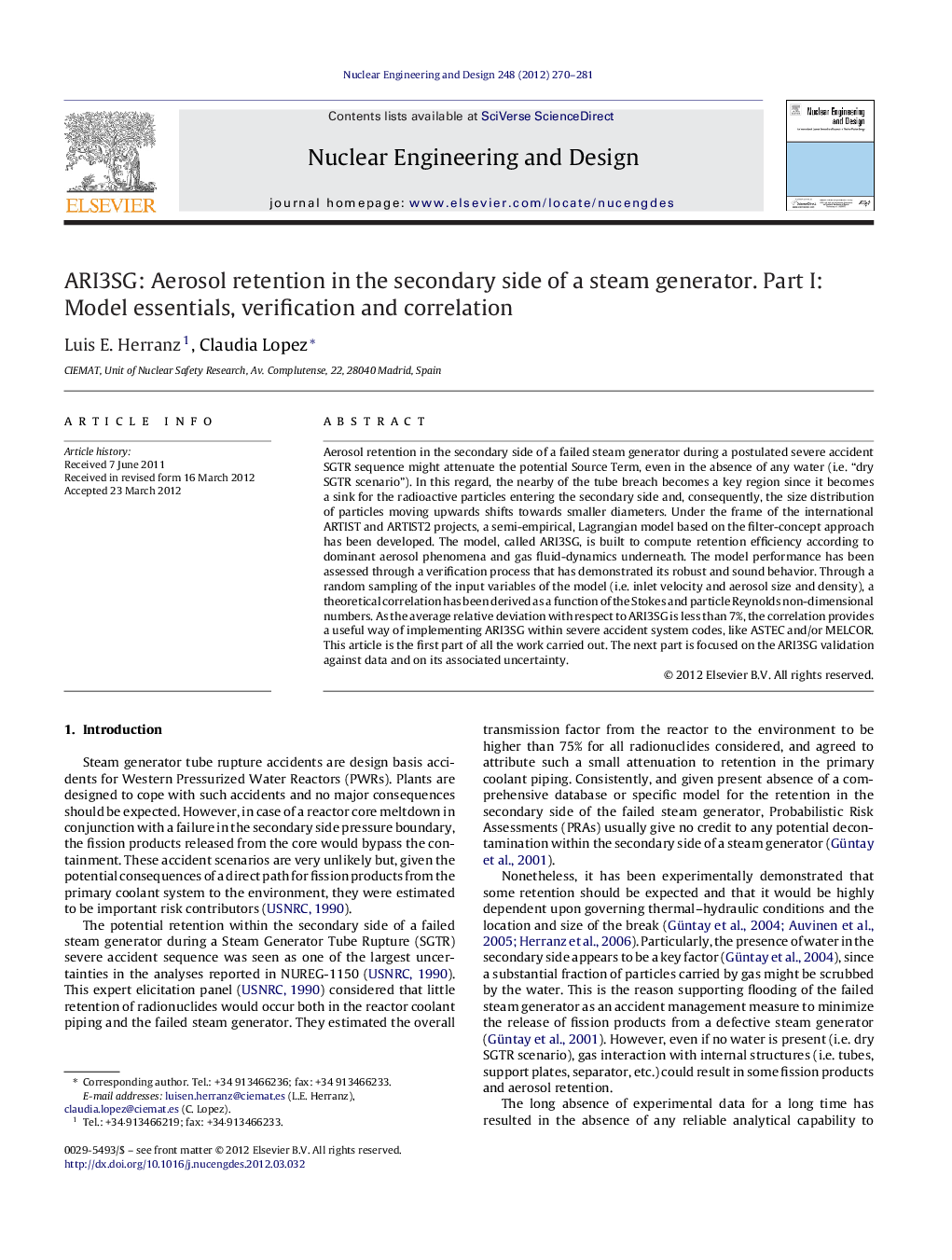| Article ID | Journal | Published Year | Pages | File Type |
|---|---|---|---|---|
| 297231 | Nuclear Engineering and Design | 2012 | 12 Pages |
Aerosol retention in the secondary side of a failed steam generator during a postulated severe accident SGTR sequence might attenuate the potential Source Term, even in the absence of any water (i.e. “dry SGTR scenario”). In this regard, the nearby of the tube breach becomes a key region since it becomes a sink for the radioactive particles entering the secondary side and, consequently, the size distribution of particles moving upwards shifts towards smaller diameters. Under the frame of the international ARTIST and ARTIST2 projects, a semi-empirical, Lagrangian model based on the filter-concept approach has been developed. The model, called ARI3SG, is built to compute retention efficiency according to dominant aerosol phenomena and gas fluid-dynamics underneath. The model performance has been assessed through a verification process that has demonstrated its robust and sound behavior. Through a random sampling of the input variables of the model (i.e. inlet velocity and aerosol size and density), a theoretical correlation has been derived as a function of the Stokes and particle Reynolds non-dimensional numbers. As the average relative deviation with respect to ARI3SG is less than 7%, the correlation provides a useful way of implementing ARI3SG within severe accident system codes, like ASTEC and/or MELCOR. This article is the first part of all the work carried out. The next part is focused on the ARI3SG validation against data and on its associated uncertainty.
► Development of a model for the aerosol retention in the break stage of a steam generator under dry SGTR conditions. ► Implementation of the model into a Fortran code. ► Verification of the model and its implementation. ► Derivation of a non-dimensional correlation of the collection efficiency encapsulating the ARI3SG model physics.
